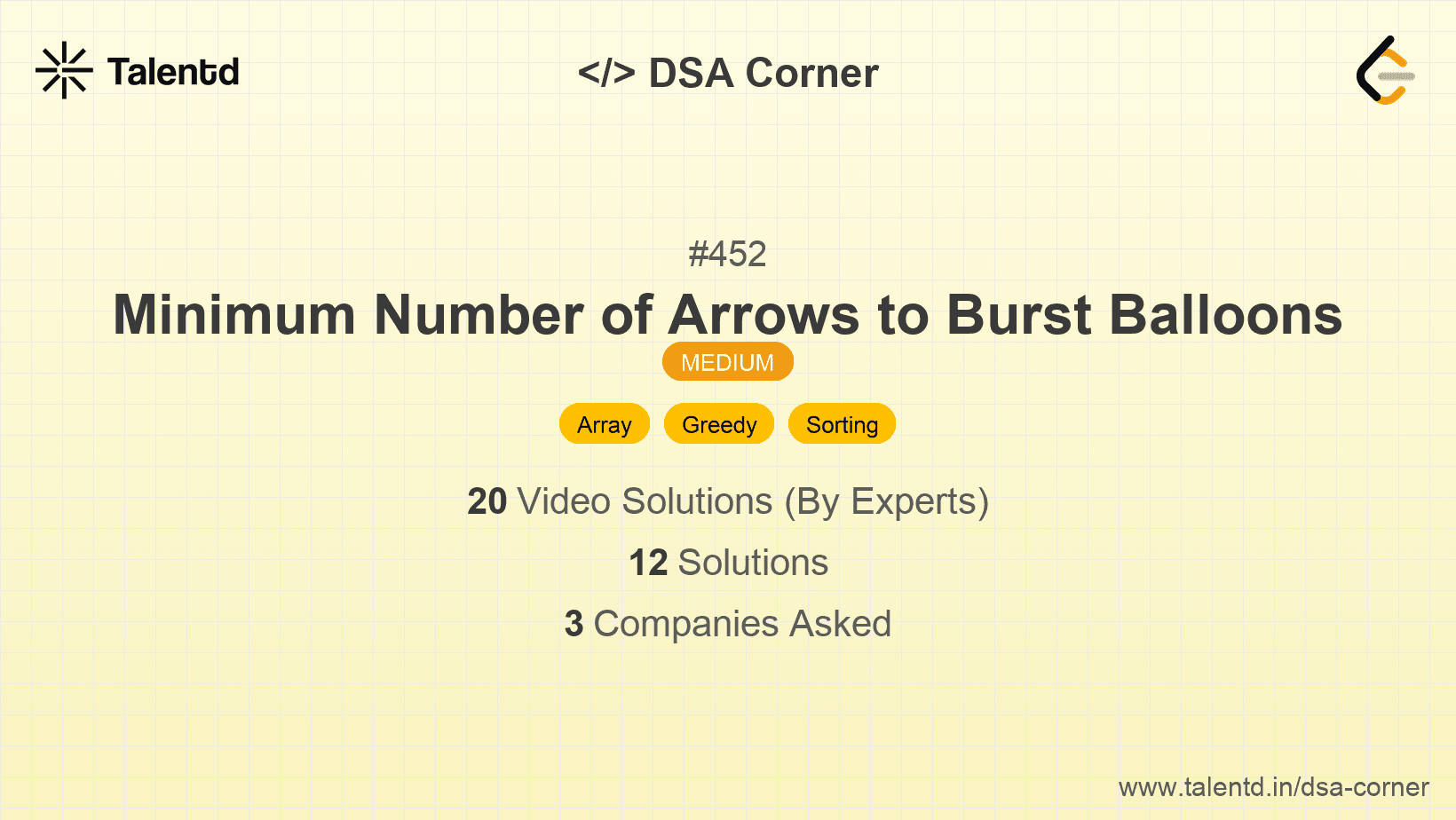
Sponsored
Sponsored
This approach involves sorting the balloons by their end points. Once sorted, we shoot an arrow at the end point of the first balloon, and then continue moving through the list, checking if subsequent balloons overlap with the burst of the arrow. If a balloon does not overlap, we need an additional arrow for it.
Time Complexity: O(n log n) due to the sorting step, where n is the number of balloons.
Space Complexity: O(1) if we ignore the space used for sorting.
1import java.util.Arrays;
2
3public class MinimumArrows {
4 public static int findMinArrows(int[][] points) {
5 if (points.length == 0) return 0;
6 Arrays.sort(points, (a, b) -> Integer.compare(a[1], b[1]));
7 int arrows = 1;
8 int end = points[0][1];
9 for (int[] point : points) {
10 if (point[0] > end) {
11 arrows++;
12 end = point[1];
13 }
14 }
15 return arrows;
16 }
17
18 public static void main(String[] args) {
19 int[][] points = {{10, 16}, {2, 8}, {1, 6}, {7, 12}};
20 System.out.println(findMinArrows(points));
21 }
22}This Java solution employs the same greedy algorithm as before, sorting the balloons by their end positions and then checking overlaps.
Notice the use of Arrays.sort coupled with a comparator to sort the balloons by their end coordinates efficiently. The iteration over the array allows us to identify when a new arrow is necessary, based on overlaps or lack thereof relative to the 'end' point managed in each loop.
This approach is adapted from the interval scheduling maximization pattern, where we attempt to find the maximum number of non-overlapping intervals. By sorting the intervals, we can focus on selecting the maximum number of compatible balloons.
Time Complexity: O(n log n) resulting from sorting operations.
Space Complexity: O(1) when sorting space considerations are minimized.
1
public class MinimumArrows {
public static int FindMinArrows(int[][] points) {
if (points.Length == 0) return 0;
Array.Sort(points, (a, b) => a[0].CompareTo(b[0]));
int arrows = 1;
int lastEnd = points[0][1];
foreach (var point in points) {
if (point[0] <= lastEnd) {
lastEnd = Math.Min(lastEnd, point[1]);
} else {
arrows++;
lastEnd = point[1];
}
}
return arrows;
}
public static void Main() {
int[][] points = new int[][] { new int[] {10, 16}, new int[] {2, 8}, new int[] {1, 6}, new int[] {7, 12} };
Console.WriteLine(FindMinArrows(points));
}
}In C#, manageability in xstart sorted positions allow for non-overlapping maximum point determination by simple arrow management strategy — essentially dictated by current minimum overlaps compute.